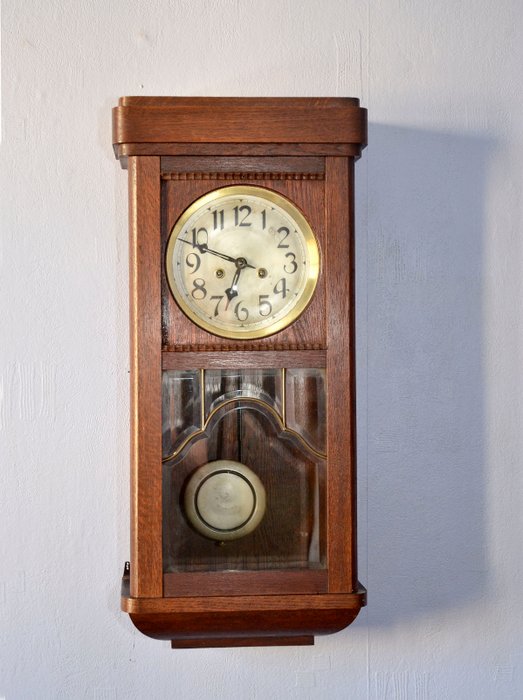

The case detailing is fantastic to look at from the carved accents to the top door The wording "Made in Silesia" dates this clock to before 1930, and the style dates it to the early to mid 1920's. He won at clock fairs in London, Paris, Sydney, Melbourne, Berlin and Amsterdam. Starting from fairly simple clocks, the clocksīecame complex and very ornamental, and sales rose to a peak in 1875, In the 1860s, he began to create the Classical After the orders, he received a fortune from the Duke of Martibore, and with this money he could pay enough to make clock cases for train stations. In 1854 he received large orders from the British Royal Mail, and the Silesian Telegraphy Centre. Crowds wereĭrawn to his works because of the quality, and he was awarded the gold medal for the best clock in the fair.

His breakthrough came in 1852 at the Silesian Clock Fair. Viennese model, and thanks to his success, in 1850 he moved his Poland), and that April he opened a small clock shop with a fewĮmployees to whom he taught clock making. In 1847, he settled in Freiburg, Lower Silesia (now Świebodzice, Time in Vienna, he decided to start his own clock factory.īecker came back to Silesia in 1845, and got married. Him the ability to fix clocks at the most intricate level. The most important country in the clock industry. Learning from many masters around Germany which, during that era, was This is a unique and unusual coffin style floor clock mad by the Gustav Becker clock making works.īecker was a German clock maker and founder of the brand Gustav Becker.īecker learned clock making in Silesia and enriched his skills by Bring a touch of class and personality into your living room or dining room with a unique timepiece.I have been repairing, restoring, and researching clocks for greater than 35 years, a clock marked "Made in Silesia" is a first for me.

On 1stDibs, you will find wall clocks and other types of antique and vintage clocks from various time periods, from Louis XV to Art Deco, and from all over the world, including Germany, France, the United Kingdom and elsewhere. Cleverly designed clocks have been created for all manner of tastes over the years. A 19th-century bronze cartel clock and barometer set is an elegant addition to a foyer, while a vintage world-map clock allows you to see the time in several locations at once. Wall clock choices are not limited to just something that keeps time. By the 17th century, wall clocks were popular luxury objects for the home. One of the most famous clocks from this era was made by Italian astronomer and physician Giovanni de’ Dondi and took approximately 16 years to complete. The wall clocks of today have come a long way from the mechanical timepieces that originated in the 14th century. Whether you want an antique timepiece or one that will match a modern motif, you are sure to find one to suit any home or office decor. The Ball clock and Sunflower clock, which were created by designer Irving Harper in George Nelson’s studio during the mid-century era, are known to design enthusiasts and have become highly collectible over the years.

Wall clocks have been designed by acclaimed creators and manufacturers such as Howard Miller Clock Company, Junghans Uhren GmbH, Pragotron and more. Antique, new and vintage wall clocks have become available over the years in a diverse range of materials, such as wood, metal and glass, as well as styles from mid-century modern to Industrial.


 0 kommentar(er)
0 kommentar(er)
